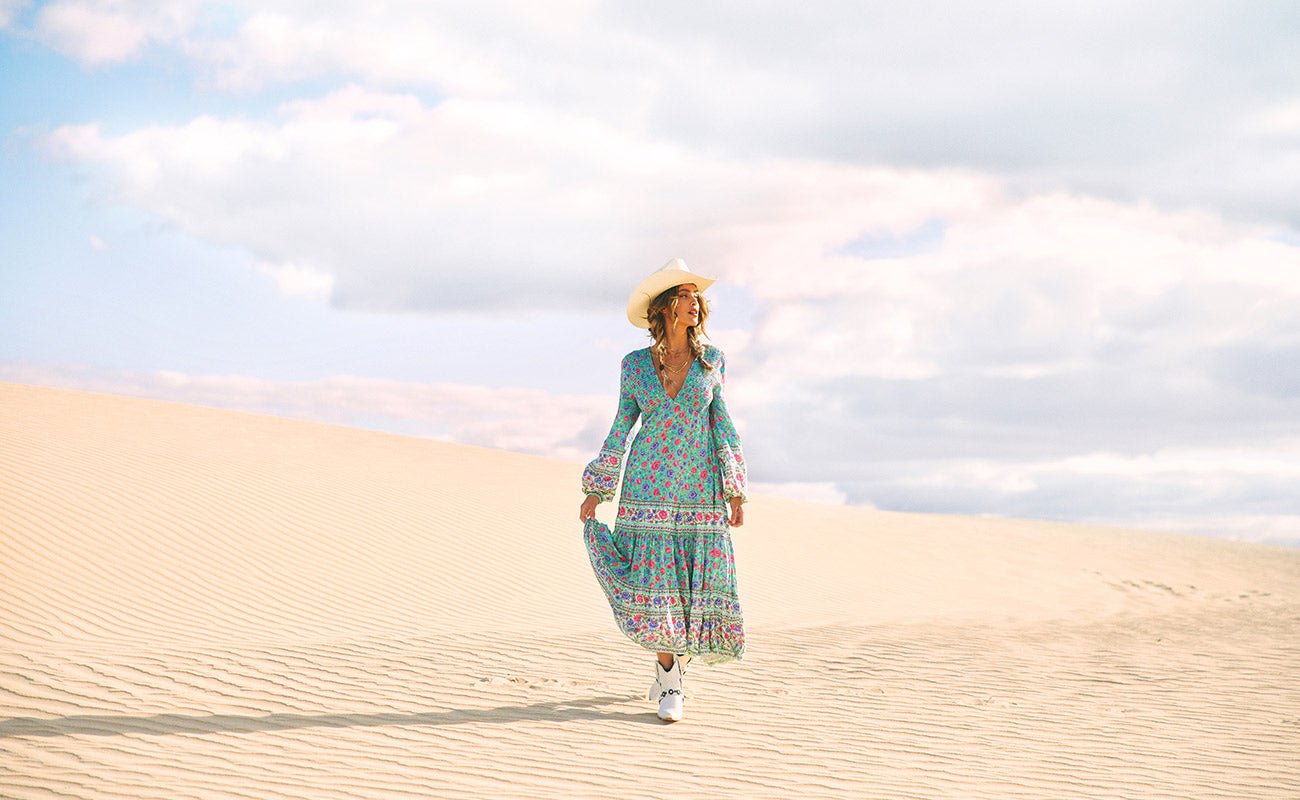International Day for Biological Diversity 2021
Saturday, 22nd May 2021 marks the International Day for Biological Diversity and this year's theme is 'We're part of the solution #ForNature'.
Sustainability is in our brand DNA. We learn from patterns in nature – patterns that are vital to life on earth. Mother Nature is our best teacher and provides us with the template for how we need to work.
The earth is a closed loop system, and in nature there is no waste. 80% of a product’s environmental impact is determined during its design stage. So, from the beginning we are thinking like nature - circular by design.
How can we design for zero-waste? How can we optimise our use of earth’s precious resources? And at the end of life how will our treasures return to earth to start a new cycle of creation?
This rich tapestry of thought enables us to create collections that are in balance with nature, and that respect the interconnected web of life.

Biodiversity is the living fabric of our planet. It is the variety, variability and abundance of living organisms and their habitats. Biodiversity refers to variations of genes, species and ecosystems.
Ecosystems are geographical areas where living organisms and nonliving elements such as landscape and climate interact in a system. Linked together through nutrient cycles and energy flows. Examples of ecosystems are rainforests and coral reefs. Healthy, diverse and thriving ecosystems are essential for life, a delicate interplay that has evolved to sustain all living creatures. We depend on biodiversity for fresh air, water, food, shelter and the natural resources that drive our economies. Providing natural services that support our agricultural, medical and industrial needs for both our survival and quality of life.
Human health and the health of the planet are interconnected. Everything is interconnected, each species depends on the services of other species for survival. An example of this is soil. A healthy soil depends on a diverse community of microorganisms, invertebrates, small mammals and the roots of plants. A single teaspoon of soil contains many thousands of species that collectively process waste into bioavailable nutrients for plants, animals and humans.
Biodiversity is declining, whole species are being lost at an alarming rate. The Inter-Governmental Science-Policy Platform on Biodiversity and Ecosystems Services (IPBES) published its first comprehensive report in 2019 drawing on 15,000 studies from around the world. It found that the number of reptiles, amphibians, birds and mammals has dropped by more than half since the 1970s. More than 1 million animals are at risk of extinction. We are facing an ecological crisis which is why the need for conservation and sustainable practices are so critical.

Biodiversity is fundamental to the fashion industry as we rely on raw materials to produce fibres and fabrics.
This is why we exclusively use Lenzing™ fibres as Lenzing™ wood comes from sustainable forestry. It is certified or controlled according to FSC® (FSC-C041246) and / or PEFC ™ (PEFC/06-33-92).
Forests are the most biodiverse ecosystems on land and some rainforests are amongst the oldest. Home to 80% of the world's terrestrial biodiversity. They provide an abundance of services and resources that much of humanity relies on. Forests create the oxygen we breathe, regulate climate, provide biomass, protect the watershed and importantly they sequester carbon. Not only this but did you know trees make rain? Water vapour is released from the leaves that bind to biological particles forming raindrops in the air. They are also an integral part of culture and identity.

Our forests are under threat. Deforestation is contributing to climate breakdown; resistance to climate extremes such as fire and flood. Also leading to vulnerability to pests, pathogens, invasive species and soil erosion.
FSC® and PEFC ™ are actively involved in the protection of endangered forests and primeval forests. They have created best forest management practices to ensure forests are conserved and managed responsibly so they deliver social, environmental and economic benefits. They protect cultural and social heritage while maintaining and enhancing biodiversity.
By combining nature with human ingenuity, we can create a world where equality is progressed on a healthy, thriving planet. We are forever grateful to work with a community of like-minded makers who uphold the same values of creating a sustainable future and like us, want to keep pushing the boundaries and be part of the solution #ForNature.
1st & 2nd images taken from our Nomada campaign shoot at Mungo National Park, NSW. Our signature print from this collection Phoebe is crafted from 100% LENZING™ ECOVERO™ a branded viscose fibre of botanic origin, produced in an eco-responsible way and derived from certified renewable, sustainably managed wood sources. LENZING™ ECOVERO™ fibres have been certified by the EU Ecolabel, a label for environmental excellence, fulfilling strict criteria for fibre production for both greenhouse gas and water emissions.
Through working with LENZING™ ECOVERO™ for this collection alone we saved 12,981 Kg of C02 and 15,142,430 Ltrs of H20.